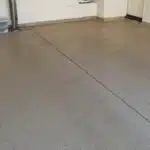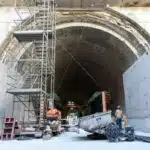Building a garage is a significant investment that homeowners must consider. It provides extra storage space, protects vehicles from harsh weather conditions, and adds value to the property. However, many homeowners are hesitant to build a garage themselves due to the complexity of the project. The question remains: should you build a garage yourself?
In this article, we aim to explore the advantages and disadvantages of building your own garage. We will discuss the necessary skills and knowledge required for this endeavor and provide tips on how to tackle such a project successfully. Whether you are an experienced DIYer or just starting out, our goal is to help you make an informed decision on whether or not building your own garage is worth the effort.
Benefits Of Having A Garage
A garage is more than just a place to park your car. It can also be used for storage, a workspace, and even as an additional living space. The benefits of building a garage are numerous, but it’s important to weigh the options before deciding whether to build one yourself or hire a contractor.
One of the main benefits of having a garage is protection from the elements. Your car will be shielded from harsh weather conditions that can cause damage over time. Additionally, a garage provides added security for your vehicle, reducing the risk of theft or vandalism. Beyond these practical considerations, a garage can also improve your home’s curb appeal and increase its overall value.
While building a garage yourself may seem like an appealing option, there are several reasons why hiring a contractor may be the better choice. A professional contractor has experience and expertise in all aspects of building construction, including electrical wiring and plumbing. They can also provide valuable advice on design options and materials selection. Furthermore, hiring a contractor ensures that you’ll have access to warranties and guarantees on workmanship and materials.
Moving on to types of garages…
Types Of Garages
Garages come in a variety of styles and designs, ranging from simple carports to elaborate structures that can house multiple vehicles. Two primary types of garages are prefabricated options and custom designs. Prefabricated options are pre-built garages that are assembled on-site, while custom designs are made to the homeowner’s specifications and built on-site.
Prefabricated garages have become increasingly popular due to their convenience and affordability. They usually come in standard sizes and can be customized with features such as windows, doors, and insulation. Many homeowners opt for prefabricated garages because they require less time to build than custom designs and can be erected by a professional team without the need for extensive construction knowledge.
Custom designed garages offer more flexibility in terms of design and functionality. Homeowners who want a garage that matches the style of their home or has unique features such as storage space or a workshop often choose this option. Custom-designed garages require more planning and construction time than prefabricated options, but they offer greater customization opportunities.
When considering building a garage, it is important to weigh the pros and cons of each type before making a decision. A few things to keep in mind when choosing between prefabricated or custom design include budget, timeline, desired features, and personal preferences. Ultimately, the best choice will depend on individual needs and circumstances.
Moving forward, assessing your DIY skills is an essential step if you’re considering building a garage yourself.
Assessing Your Diy Skills
According to a recent survey, about 58% of homeowners prefer to undertake home improvement projects themselves. While there are undoubtedly benefits to DIY renovations, it’s important to assess your skill set before beginning any large-scale project such as building a garage.
Assessing your limitations is key when considering whether you should build a garage yourself. Do you have experience with carpentry, electrical work, and plumbing? If not, you may want to consider alternative options such as hiring a contractor or purchasing a pre-fabricated garage kit that requires less skill and labor.
Keep in mind that even if you possess some DIY skills, building a garage requires significant time and effort. You’ll need to dedicate several weekends (or more) for construction, which can be challenging if you have other obligations or limited free time. Ultimately, the decision to build a garage yourself should be based on an honest assessment of your abilities and available resources.
Moving forward with any home improvement project requires complying with local building codes and permits. Understanding these requirements is crucial when planning your garage construction project. In the next section, we’ll explore the necessary steps for obtaining permits and complying with building codes in your area.
Building Codes And Permits
Assessing your DIY skills is an important step before deciding to build a garage yourself. If you have experience in construction and are comfortable with tools, you may be able to tackle the project on your own. However, if you have little or no experience in this area, it’s best to hire a professional contractor.
Before beginning any construction project, it’s important to understand building code requirements and obtain the necessary permits. Building codes ensure that structures are safe and meet certain standards. The permit application process can be time-consuming and may involve submitting detailed plans and undergoing inspections throughout the construction process. Failure to comply with building codes can result in fines or even having to tear down the structure.
Building a garage can be a complex project, but with careful planning, it can be done successfully. When planning your garage, consider factors such as the size of your property, local zoning laws, and how the structure will fit into your overall property design. With these considerations in mind, you can create a plan that meets both your needs and building code requirements.
- Consider hiring an architect or designer to help with planning and obtaining necessary permits.
- Research building codes specific to your area before beginning any construction.
- Keep in mind that local zoning laws may dictate where on your property you can build a garage.
With proper planning and attention to detail, building a garage yourself can be a rewarding experience. However, it’s important not to overlook the importance of understanding building code requirements and obtaining necessary permits before starting any construction project. By following these guidelines and seeking professional guidance when needed, you can successfully build the garage of your dreams while staying within legal boundaries. In the next section, we’ll discuss some key steps for planning your garage project.
Planning Your Garage
Proper planning is paramount when it comes to designing a garage. Garage design can be tricky, especially if you are building it yourself. The first step is to determine the size of your garage. This will depend on the number of cars you plan on storing, as well as any other purposes you may have for the space. Once you have determined the size, you can start thinking about the layout and design.
Zoning regulations must also be considered during the planning process. You’ll need to check with your local zoning board to see what permits are required before starting construction. They will provide you with guidelines regarding setbacks, lot coverage, height restrictions, and other pertinent regulations that should be followed. Failure to comply with these regulations can result in fines or even having to tear down your newly constructed garage.
Taking the time to plan your garage properly will save you time and money in the long run. It’s important not only to consider what you want out of your garage but also what zoning regulations require. With proper planning and adherence to zoning laws, you can avoid headaches down the road and ensure that your garage meets all necessary requirements for safety and function.
Moving onto site preparation, there are several key steps that need to be taken before construction can begin.
Site Preparation
Now that you have a solid plan in place, it’s time to move on to the next phase of your garage-building project: site preparation. Before you begin any construction, you need to ensure that the land is ready and able to support your new structure. This involves a few crucial steps, including site excavation and implementing drainage solutions.
Firstly, site excavation is an essential step in preparing your construction site. This process involves removing any debris or vegetation from the area where your garage will be built. Depending on the size and scope of your project, you may need to hire professionals with heavy equipment for this job. Additionally, if the ground is uneven or sloped, grading may be necessary to create a level surface for your foundation.
Secondly, proper drainage solutions are critical for preventing water damage to your garage and property. To ensure adequate drainage around your garage, consider installing gutters and downspouts that direct water away from the building’s foundation. You may also need to grade the surrounding soil away from the structure or install French drains or other drainage systems.
Lastly, before moving on to foundation and framing, take some time to make sure all permits have been acquired and zoning regulations have been met. Additionally, double-check that all utility lines have been marked and cleared by local authorities before digging begins.
- Consider hiring professionals for site excavation
- Grading may be necessary depending on ground conditions
- Install gutters/downspouts and consider additional drainage solutions
With site preparation complete, you can now move forward with confidence into the next stage of constructing your dream garage: foundation and framing.
Foundation And Framing
Foundation and Framing:
Building a garage yourself can be an exciting and rewarding project, but it requires careful planning and execution. One of the most important aspects to consider is the foundation. A solid foundation is crucial for the stability and longevity of your garage. Before starting any construction work, it’s essential to check with local building codes for specific requirements regarding foundation depth, size, and materials. Once you have the necessary permits, you can start preparing the site by clearing vegetation, grading the ground, and excavating trenches for footings.
Tools needed for foundation work typically include digging tools such as shovels, picks, and post hole diggers. You may also need a concrete mixer or wheelbarrow to mix concrete for pouring footings or slabs. Common mistakes in foundation work include insufficient depth, incorrect placement of footings, and inadequate reinforcement. It’s crucial to follow proper techniques for mixing and pouring concrete to ensure a strong foundation that will withstand years of use.
After completing the foundation work, the next step is framing. This involves constructing the walls and roof structure that will support your garage’s weight and provide protection from weather elements. Tools needed for framing typically include saws (circular saws or handsaws), hammers or nail guns, measuring tape, levels, square tools (such as framing squares) and safety equipment such as goggles and gloves. Common mistakes in framing include improper spacing between studs or rafters, incorrect alignment of walls or roof structures leading to uneven surfaces or leaks in roofing material.
As mentioned earlier, electrical and plumbing considerations are an essential part of building a garage yourself – we’ll discuss these in more detail in our next section. But first things first – make sure your foundation is solid before moving onto framing!
Electrical And Plumbing Considerations
Before embarking on building a garage, it is important to understand the electrical safety and plumbing installation requirements that come with the project. Electrical safety is a critical aspect of any construction project, especially when it comes to garages. The first thing to do before starting any electrical work is to have an electrician inspect the area where you plan on putting up your garage. This inspection will help identify any potential hazards such as live wires or outdated wiring systems that could pose a risk during construction.
Once you have identified potential hazards, it’s time to consider how you want your garage wired. Proper electrical wiring is essential for the safe operation of your garage. It’s best to work with a qualified electrician who can help guide you through the process of installing outlets, light fixtures, and other electrical features in your new structure. Additionally, it’s important to ensure that all electrical components are installed correctly and up-to-code.
Plumbing installation is another crucial aspect of building a garage. If you’re planning on adding a bathroom or sink in your garage, proper plumbing installation is necessary for reliable access to water and efficient drainage. You may also need to consider if there are any specific permits required by your local municipality for adding plumbing fixtures within a detached structure like a garage.
- Plan out the number of outlets and fixtures needed before starting with wiring.
- Ensure all electrical components are properly grounded.
- Hire licensed professionals for both electrical and plumbing installations.
- Check with local authorities about necessary permits for plumbing installations.
With these considerations in mind, you can build a safe and functional garage that meets all your needs while adhering to local codes and regulations. In the subsequent section about roofing and siding, we’ll discuss some important things you need to know before starting this step of the project.
Roofing And Siding
Coincidentally, one of the most important aspects to consider when building a garage is the roofing and siding. These two elements work hand in hand to protect your garage from harsh weather conditions. Choosing the right materials for both roofing and siding can make a significant difference in the longevity and durability of your garage.
When it comes to roofing materials, there are several options available in the market. Asphalt shingles are a popular choice due to their affordability and easy installation. Metal roofing is another option that offers excellent durability and energy efficiency. On the other hand, if you want something eco-friendly, you can opt for a green roof that has plants growing on top of it.
Siding options also vary widely, with some popular choices including vinyl, wood, and fiber cement. Vinyl sidings are affordable and require low maintenance, while wood sidings offer a natural look but need more upkeep. Fiber cement siding has become increasingly popular due to its durability and resistance to fire and insects. Ultimately, choosing the right combination of roofing material and siding option will depend on your budget, personal preferences, and local weather conditions.
Transitioning into the next section about insulation and ventilation, it’s important to note that these elements play an essential role in maintaining an optimal temperature inside your garage. Proper insulation will keep your garage warm during winter months while preventing heat from entering during summers. Adequate ventilation will ensure proper air circulation inside your garage while minimizing moisture buildup that can lead to mold growth or decay of wooden structures. So let’s dive deeper into these crucial aspects of building a garage!
Insulation And Ventilation
Effective insulation and ventilation are essential components of any garage building project. Without proper insulation techniques, a garage can become an energy sink, causing your heating and cooling bills to skyrocket. On the other hand, inadequate ventilation systems can lead to the buildup of harmful gases and chemicals that can pose significant health hazards.
When it comes to insulating your garage, there are several options available. One popular choice is fiberglass batts, which provide excellent thermal resistance and are relatively easy to install. Another option is spray foam insulation, which creates an airtight seal that prevents heat loss and drafts from entering your garage. Whichever insulation technique you choose, it’s important to ensure that all gaps and crevices are adequately filled to prevent cold air infiltration.
Adequate ventilation is also crucial for maintaining a healthy environment in your garage. A well-designed ventilation system should promote air circulation while preventing the buildup of harmful fumes and chemicals. Consider installing exhaust fans or vents on opposite walls of your garage to create cross-ventilation. Additionally, adding windows or skylights can help increase natural light and improve airflow.
- Adding weather stripping around windows and doors helps prevent drafts.
- Installing a ceiling fan promotes air circulation throughout the garage.
- Incorporating a radiant barrier in addition to traditional insulation helps reflect heat away from your garage.
As we have seen, proper insulation techniques and effective ventilation systems are crucial for building a functional and comfortable garage space. In our next section, we will take a closer look at how to install windows and doors in your new structure without compromising on security or energy efficiency.
Installing Windows And Doors
As you move through the process of building your own garage, one crucial step is the installation of windows and doors. This stage is essential to ensure that your structure is secure, energy-efficient, and visually appealing. But before diving into the installation process, it’s important to gather all necessary materials and tools. The materials required will depend on the type of windows and doors you choose. However, most installations require a level, drill, screws, caulking gun, and sealant.
One common mistake during window and door installation is neglecting to measure correctly. Before beginning any work, double-check that all measurements are accurate to avoid costly errors later on. Another mistake is failing to use proper insulation around openings. Without insulation or weatherstripping in place, air can escape from inside the garage leading to increased energy bills.
In conclusion, installing windows and doors requires careful planning and execution to ensure a successful outcome. With the right materials and tools at hand, homeowners can tackle this task without too much difficulty. By avoiding common mistakes such as measurement errors or lack of insulation around openings, you can create a secure and energy-efficient garage that adds value to your property. In the next section about flooring and finishing, we will discuss how to add final touches to your project for a polished look.
Flooring And Finishing
When building a garage, flooring and finishing materials must be taken into consideration. For the floor, concrete is the most common choice as it is durable, easy to clean and resistant to moisture. For a more decorative and unique finish, tiles, vinyl or stone may be used. Finishing materials can include drywall, paint, wallpaper, brick, stone or wood paneling. With the right choice of materials, a garage can be stylish and functional.
Flooring Materials
When it comes to building a garage, choosing the right flooring material is important. The flooring should be able to withstand heavy loads and frequent foot traffic. Epoxy flooring and interlocking tiles are two popular options that homeowners can consider.
Epoxy flooring is a durable and easy-to-clean option for garage floors. It is made up of a resin and hardener mixture that forms a strong bond with the concrete surface. This type of flooring is resistant to stains, chemicals, and abrasions, making it perfect for garages where oil spills and other messes are common. While epoxy flooring can be installed by homeowners themselves, it requires proper preparation of the concrete surface before application.
Interlocking tiles are another popular option for garage flooring. They are easy to install and come in different materials such as PVC, rubber, or polypropylene. Interlocking tiles provide a non-slip surface that can withstand heavy loads without cracking or chipping. Additionally, they offer flexibility as individual tiles can be replaced if damaged. Homeowners who prefer DIY projects will find interlocking tiles an easy option as they require no special tools or adhesives for installation.
In conclusion, choosing the right garage floor material depends on factors such as durability, ease of installation, and budget. Epoxy flooring and interlocking tiles are two great options that provide long-lasting protection for your garage floor while enhancing its appearance at the same time. By carefully considering these options side by side with professional advice where necessary you will have a better chance of making an informed decision when choosing which one best suits your needs.
Finishing Materials
When it comes to garage renovations, flooring is not the only aspect to consider. The walls are also an essential part of any garage and can be transformed with the right finishing materials. There are a variety of options available for both garage flooring and wall finishes, each with their own unique benefits.
Finishing materials for garage walls include drywall, paneling, and paint. Drywall is a popular option as it provides a smooth surface that can easily be painted or textured. Paneling is another option that offers durability and easy installation. With various colors and textures available, paneling can add dimension and interest to any garage space. Paint is a cost-effective option that allows for endless customization possibilities. By adding color and texture to your garage walls, you can create a space that is not only functional but visually appealing as well.
When it comes to garage flooring, there are many finishing options beyond epoxy flooring and interlocking tiles. Vinyl flooring is another popular choice that offers durability and easy maintenance. With its water-resistant properties, vinyl flooring is perfect for garages where spills may occur frequently. Concrete stains or coatings are yet another option that can provide a decorative finish while also protecting the concrete surface from wear and tear.
In summary, selecting the right finishing materials for your garage walls and flooring can transform your space into a functional, stylish area that suits your needs. From drywall to concrete coatings, there are plenty of options available to enhance the look and functionality of your garage while increasing its value at the same time. By considering all available options carefully when making decisions about these important aspects of your home improvement project you will have greater success in creating an environment which will meet all of your needs over time.
Cost Comparison: Diy Vs. Hiring A Contractor
Now that you have finished flooring and finishing your garage, it’s time to decide if you should build it yourself or hire a contractor. Budget considerations and time commitment are two critical factors to consider before making your decision.
Building a garage yourself can save you money as labor costs can be quite expensive. Moreover, building it yourself allows you to have full control over the design and materials used. You can also work on it at your own pace without worrying about deadlines or scheduling conflicts with contractors.
On the other hand, building a garage requires a significant amount of time and effort. It may take weeks or even months to complete depending on your skill level, availability, and the complexity of the project. If you’re juggling work and family responsibilities, finding the time to build a garage may be challenging.
Bullet points:
- DIY: Saves money
- DIY: Full control over design and materials used
- DIY: Work at your own pace
- Hiring a Contractor: Saves time
Safety precautions are essential when building a garage. The construction process involves heavy lifting, handling power tools, and working with electrical wiring. As such, proper personal protective equipment like gloves, safety glasses, and helmets should be worn at all times. Additionally, ensure that all electrical connections are done by licensed professionals to avoid any accidents caused by faulty wiring.
In conclusion, building a garage yourself is an excellent option if you’re looking for cost savings and full control over the project’s design. However, if you value your time more than money or lack the necessary skills needed for construction work, then hiring a contractor may be the better choice. Regardless of which option you choose, always prioritize safety precautions during construction to avoid any accidents or injuries.
Safety Precautions
Did you know that in the United States, over 30,000 people are injured every year due to accidents while working on DIY projects at home? This statistic highlights the importance of taking safety precautions seriously when building a garage yourself. In order to avoid potential hazards and keep yourself and others safe, it is crucial to use proper safety gear and follow recommended guidelines.
Safety gear should be worn at all times during the garage building process. This includes goggles, gloves, hard hats, and sturdy work boots. It is also important to have a first aid kit on hand in case of any accidents or injuries. Remember that prevention is key – take the time to read up on best practices for staying safe while working on your garage project.
Potential hazards when building a garage include falls from ladders or elevated areas, electrical shocks from wiring, and cuts from power tools or sharp materials like metal or wood. To minimize these risks, ensure that all equipment is properly maintained and used correctly. Additionally, always be aware of your surroundings and take breaks if you start feeling fatigued or overwhelmed. With the right mindset and preparation, you can build your own garage safely and successfully.
Transitioning into the next section about tips for a successful DIY garage build, it is important to remember that safety should always come first. By taking proper precautions and using the appropriate gear, you can minimize risks and focus on creating a high-quality finished product.
Tips For A Successful Diy Garage Build
Building a garage yourself can be a fulfilling and cost-effective project. However, it’s important to approach the task with caution and proper planning. Here are some tips for a successful DIY garage build.
Firstly, make sure you have all the necessary tools needed before starting your project. This will save you time and frustration in the long run. Some basic tools required include a hammer, saw, measuring tape, level, drill, and safety equipment such as goggles and gloves.
Secondly, time management is crucial when building a garage yourself. Set realistic goals and timelines for each stage of the project. It’s also important to dedicate enough time each day or week to work on the project to ensure progress is made efficiently.
Thirdly, consider hiring professional help for certain aspects of the project such as electrical or plumbing work. It may seem like an added expense but it can save you from costly mistakes in the future.
Lastly, take advantage of online resources such as tutorials and forums where other DIY builders share their experiences and advice.
By following these tips and approaching your DIY garage build with patience and careful planning, you can achieve a successful outcome that will not only add value to your home but also provide additional storage space for years to come.
Conclusion
Having a garage is a great addition to any home, providing ample storage space, protection for vehicles and equipment, and even an extra workspace. If you’re considering building a garage yourself, there are several factors to consider before taking on such a project. Assessing your DIY skills is crucial in determining whether or not you have the necessary experience and tools to complete the job safely and correctly. Additionally, obtaining building permits and adhering to local codes must be taken into consideration.
While the idea of building your own garage may seem daunting at first, the benefits can outweigh the challenges. Not only can you save money by doing it yourself, but you also have the freedom to customize every aspect of your garage design to fit your specific needs. With careful planning, attention to detail, and safety precautions in place, building your own garage can be a rewarding experience that adds value to your home.
In conclusion, if you’re up for a challenge and have the necessary skills and resources available, building a garage yourself can be a viable option. However, it’s important to recognize that this is not a task for everyone. For those who are willing to put in the time and effort required, constructing your own garage can result in significant cost savings while providing unique customization opportunities that would otherwise be unavailable through hiring a contractor. Overall, regardless of which route you choose, adding a garage is an investment that will undoubtedly pay off in multiple ways for years to come.
Image Credits
- “Utrecht: ‘De Cope’ Parking Garage and Office Building” by harry_nl (featured)





























